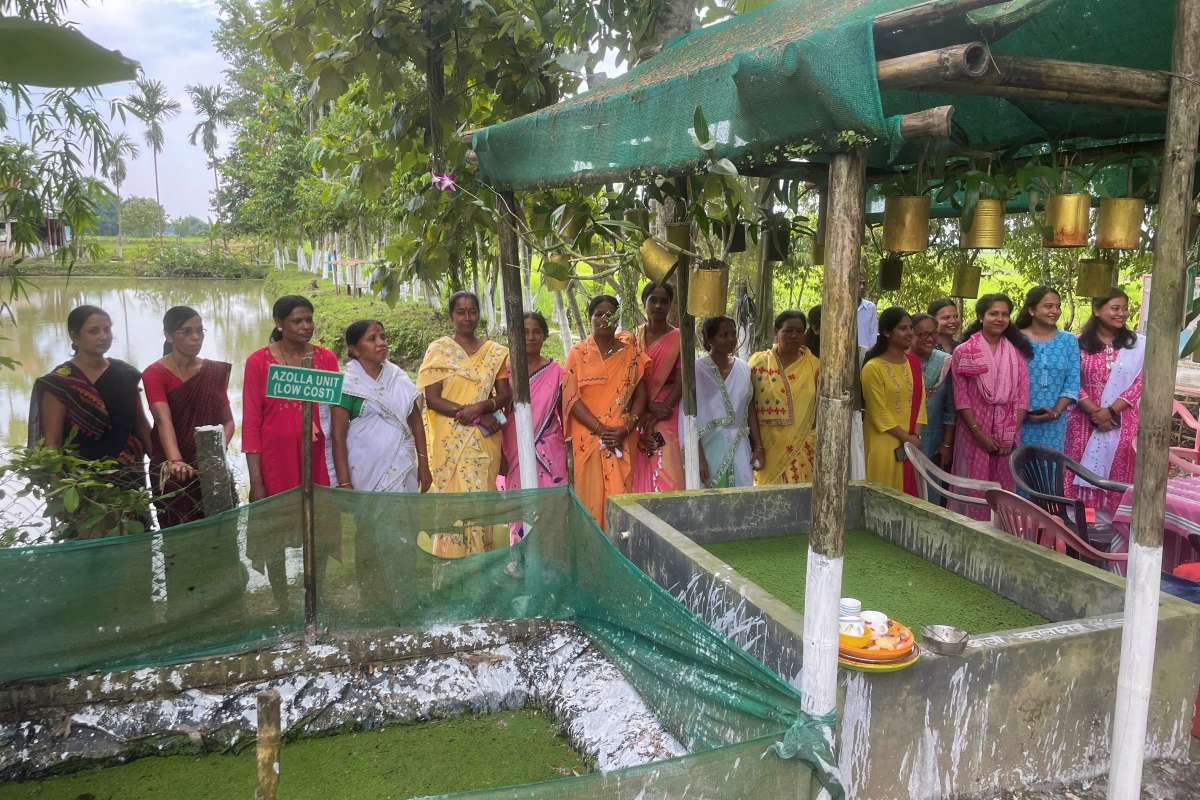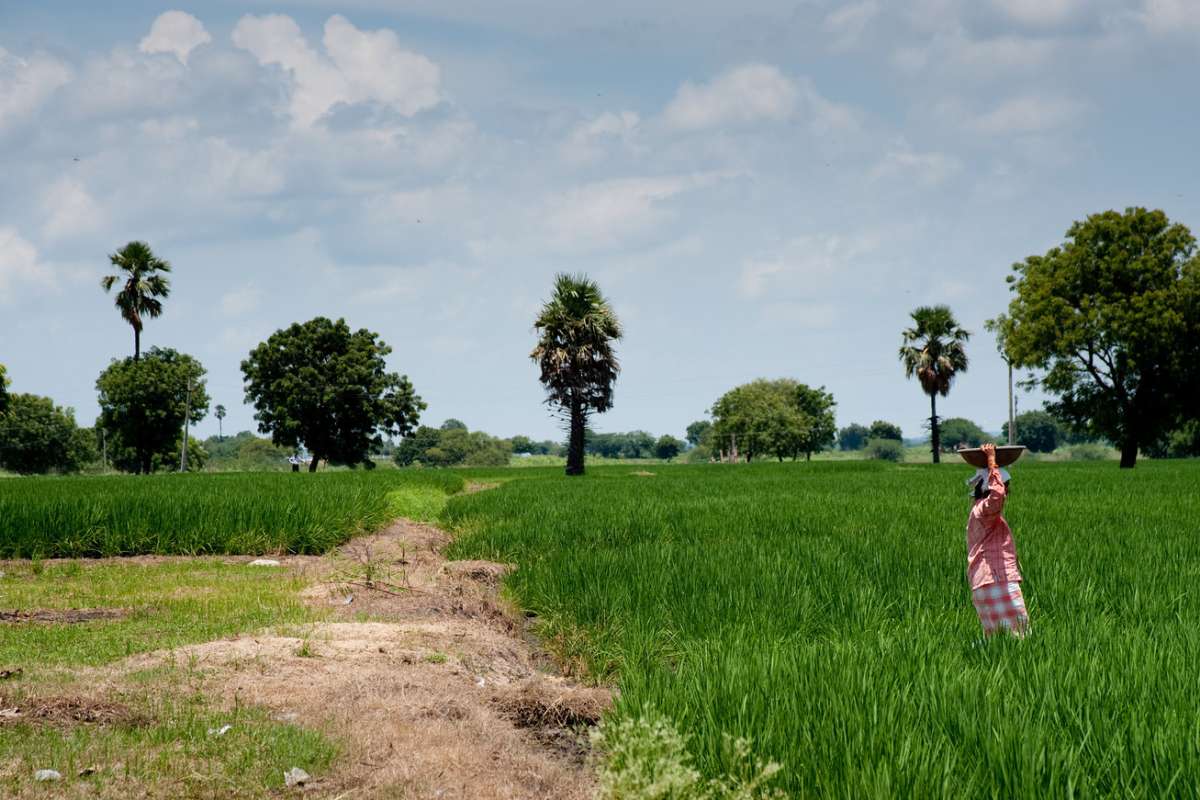New book on Climate Neutral and Resilient Farming Systems

Empowering women in agriculture is important when it comes to improving climate change adaptation, food and nutrition security and rural development. In the Resilience project, active participation of women is ensured by adopting context-specific strategies based on gender analyses of the case study areas. Here from a Resilience meeting with farmers held in Chikarada village in Ganjam district, Odisha. Photo: Kathrine Torday Gulden
To achieve the goals adopted by national and international climate agreements, urgent climate action is needed. A new book presents evidence-based findings on climate neutral and resilient farming systems and provides solutions for increasing sustainable productivity while reducing GHG emissions.
Intensive farming systems are a significant source of greenhouse gas emissions, thereby contributing to global warming and the acceleration of climate change. To achieve the two degrees Celsius target adopted by the 2015 Paris Agreement, the mitigation of GHG emissions needs to be urgently addressed. However, this is not possible if local and national level innovations are not accompanied by international level cooperation, mutual learning and sharing of knowledge and technologies.
On March 27, 2023, the Royal Norwegian Embassy in New Delhi, India, hosted the book launch event and panel discussion for the book Climate Neutral and Resilient Farming Systems, published by Routledge and edited by Dr Udaya Sekhar Nagothu from NIBIO.
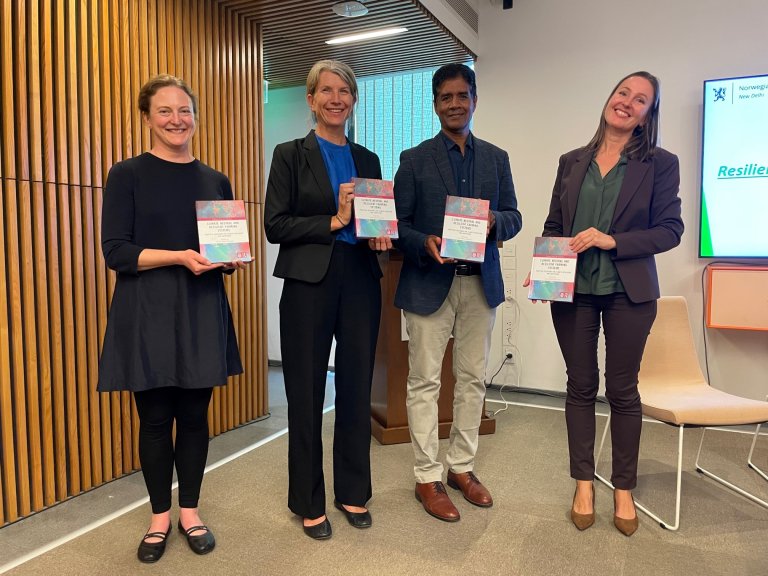
In her opening remarks, Minister Counsellor Ms. Martine Aamdal Bottheim, highlighted the importance of climate adaptation among smallholder-farmers for increased global food security.
“A few weeks ago, Norway released a new strategy for climate change, hunger and vulnerability that lays the foundation for intensified Norwegian efforts to assist vulnerable societies in adapting to climate change. Hence, today’s launch of the book, an open access publication, is a very timely event for us here at the Embassy,” she said.
The Minister Counsellor added that the book is also relevant in connection with Norway’s strategy for promoting food security in development policies, which was released by the Norwegian Minister of Development, Anne Beathe Tvinnerheim, last year.
“This strategy highlights the importance of increased income for small-scale farmers, and also emphasizes that there is great potential for more effective climate adaptation if small-scale producers are organized. Norway has pledged to double its climate related funding to development countries by 2026, which includes a commitment to at least triple the funding for climate change adaptation in line with the Paris Agreement,” she said.

Urgent climate action is needed
In the panel discussion that followed the book launch, Dr Udaya Sekhar Nagothu stressed the need for urgent action to ensure food security in the context of climate change.
“The climate crisis is global. We have international and national agreements in place, now it is time to act,” he said.
This is in line with the recent AR6 Synthesis Report Climate Change 2023 in which IPCC states that the 1.5°C limit is still achievable but requires transformative action across sectors and by everyone at all levels.
In accordance with the conclusions of the book Climate Neutral and Resilient Farming Systems, the report focuses on the critical need for action that considers climate justice and focuses on climate resilient development. It outlines that by sharing best practices, technology, effective policy measures, and mobilising sufficient finance, any community can decrease or prevent the usage of carbon-intensive consumption methods. The biggest gains in well-being can be achieved by prioritizing climate risk reduction for low-income and marginalized communities.
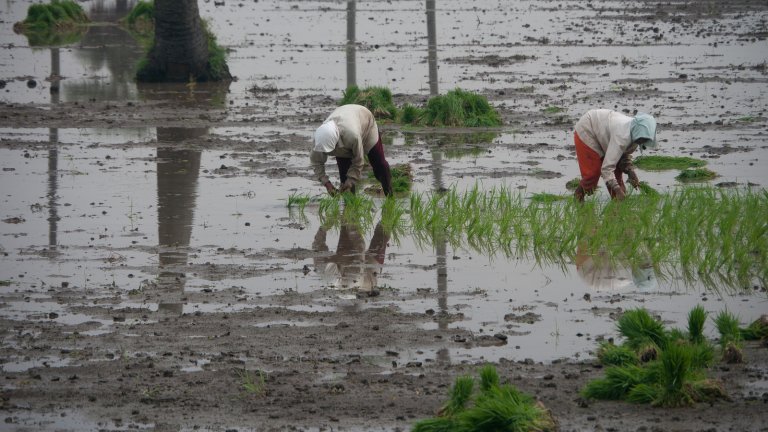
Positive results for Direct Seeded Rice
The aim of climate smart agriculture is to sustainably increase farmer’s resilience, improve agricultural productivity, achieve food security and sustainable development goals in addition to reduce greenhouse gas emissions.
In Climate Neutral and Resilient Farming Systems there is a particular focus on paddy rice farming, as it is one of the major contributors to global warming and the acceleration of climate change. One country which is particularly vulnerable to climate change and variability, is India. Here, yields and production are projected to decline by as much as 10.5 and 9.9 percent respectively, compared to the rest of the world where predicted yield and production declines are 5 and 3.7 percent in 2050.
In the panel discussion at the Norwegian Embassy, Dr A K Nayak, Director of ICAR-National Rice Research Institute in Cuttack, India, presented some of the climate smart agricultural technologies the NIBIO-coordinated Resilience project has implemented among smallholders in India.
One of the technologies is Direct Seeded Rice (DSR) instead of the recommended Transplanted Rice with Conventional Flooding (TPR-CF). Direct seeding is a crop establishment system in which rice seeds are sown directly into the field, as opposed to the traditional method of growing seedlings in a nursery before transplanting them into flooded fields.
“Alternate wetting and drying in high yielding direct-seeded rice systems have had positive results in the Resilience case study areas in comparison with the traditional TPR-CF system,” Dr A K Nayak said.
Compared to the recommended practice TPR-CF, Dr Nayak stated that irrigation water productivity was 26 percent higher with the DSR-AWD system, with only a slight reduction in grain yield. Around 16 percent higher energy productivity was recorded in DSR-AWD as opposed to the TPR-CF system. The benefit-cost ratio was also significantly higher for the DSR-AWD cropping system.
The climate crisis - an opportunity to achieve future sustainable development
In its conclusion, the book Climate Neutral and Resilient Farming Systems states that future farming strategies should strictly consider combining agroecology based and technology-based solutions which address both climate adaptation and mitigation.
“The various chapters support the argument that sustainable and precision-based management should be the way forward to improve efficiency and productivity, whether it is soil, water or crop management,” Dr Udaya Sekhar Nagothu says.
Any new solutions to be introduced should be easy to adopt, low risk and low cost, affordable by smallholders. Upscaling pathways should be accompanied by proper training, investments and monitoring. Social, economic/market and policy implications, including gender integration, will however determine the success of any new interventions.
“Countries should regard the climate crisis as an opportunity towards future sustainable development, and a good way to fulfill their commitments to Nationally Determined Contributions and the Sustainable Development Goals,” Dr Udaya Sekhar Nagothu says.
Contacts

Climate Neutral and Resilient Farming Systems
The book Climate Neutral and Resilient Farming Systems brings together international collaborative research on climate resilient and sustainable farming systems compiled by experts from various regions. Several of the examples are taken from the Norwegian government funded climate adaptation in agriculture projects coordinated by NIBIO, such as the ongoing RESILIENCE project in Odisha and Assam in India.
Experiences from ongoing or recently concluded programs in other regions of Southeast Asia, the EU and Africa, have also been included by the respective book chapter authors.
Editor of the book, Udaya Sekhar Nagothu, is Research Professor and Director at the Centre for International Development, NIBIO (Norsk Institutt for Bioøkonomi/Norwegian Institute of Bioeconomy Research), Norway. He is the editor of The Bioeconomy Approach (2020), Agricultural Development and Sustainable Intensification (2018), Climate Change and Agricultural Development (2016) and Food Security and Development (2015).
Climate Neutral and Resilient Farming Systems is available for free download at Taylorfrancis.com
Paris agreement
The Paris Agreement is a legally binding international treaty on climate change. It was adopted by 196 Parties at the UN Climate Change Conference (COP21) in Paris, France, on 12 December 2015. It entered into force on 4 November 2016.
Its overarching goal is to hold “the increase in the global average temperature to well below 2°C above pre-industrial levels” and pursue efforts “to limit the temperature increase to 1.5°C above pre-industrial levels.”
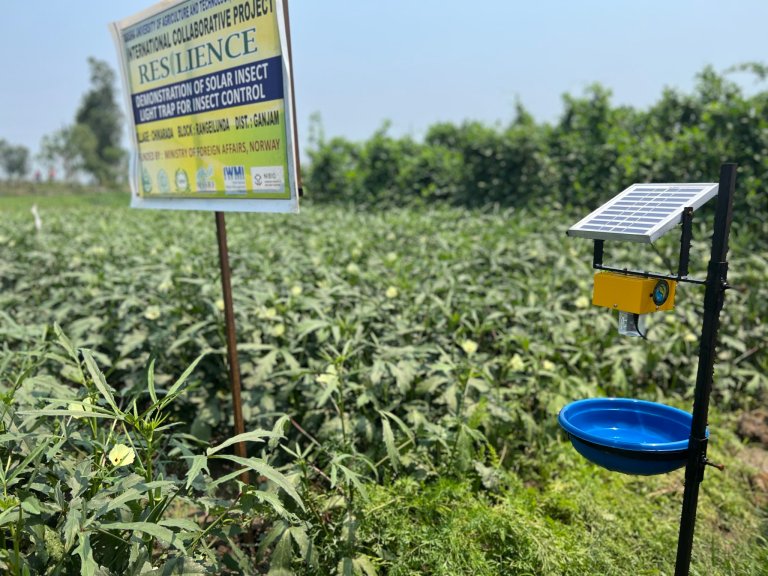
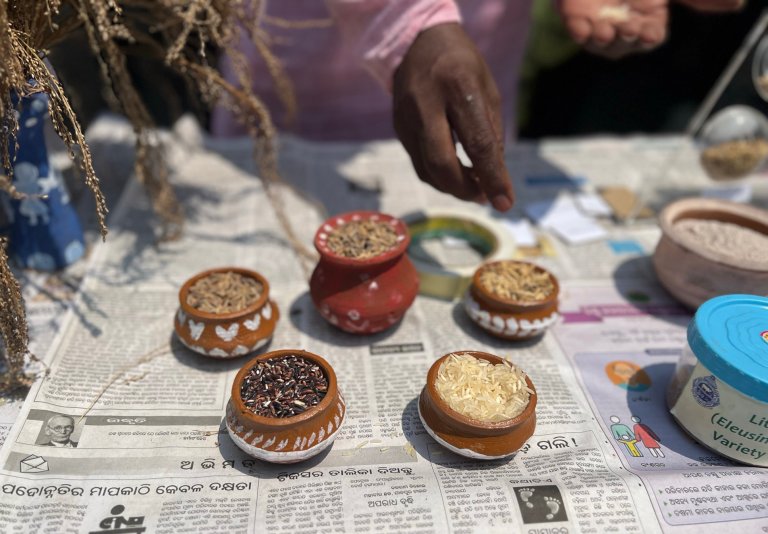
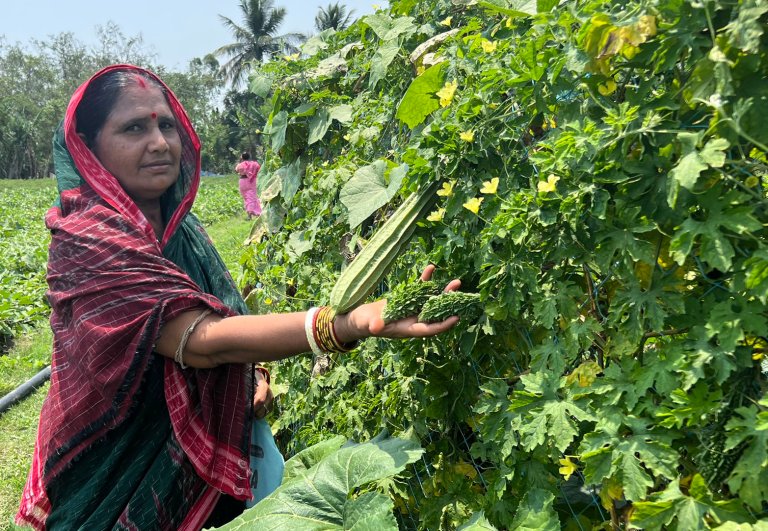
Contacts



